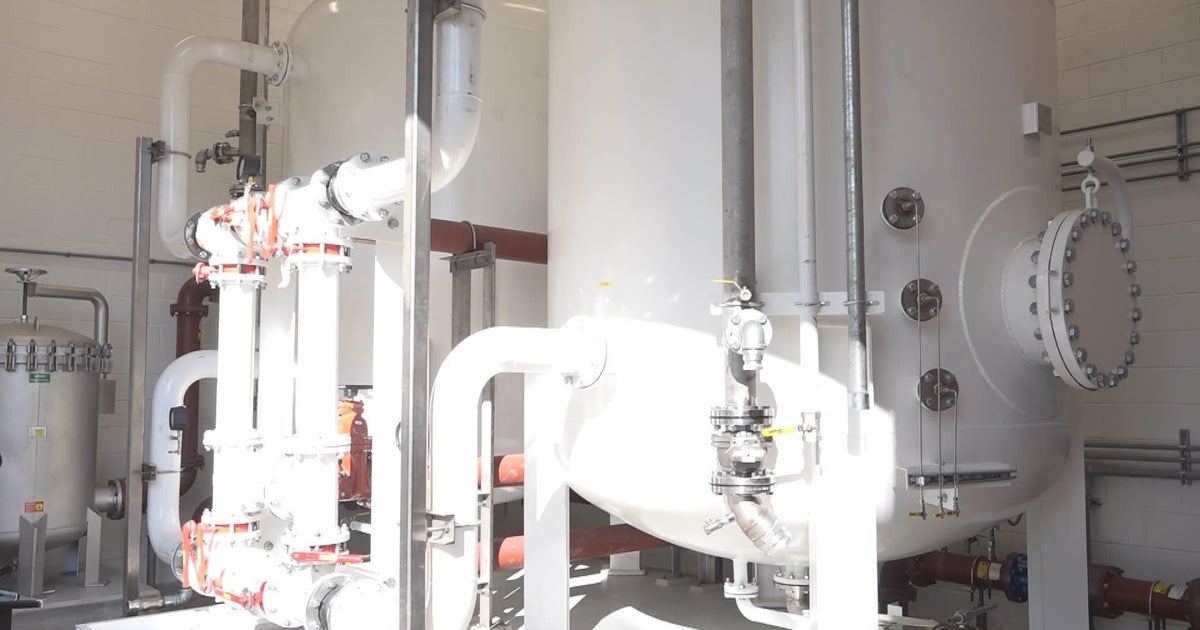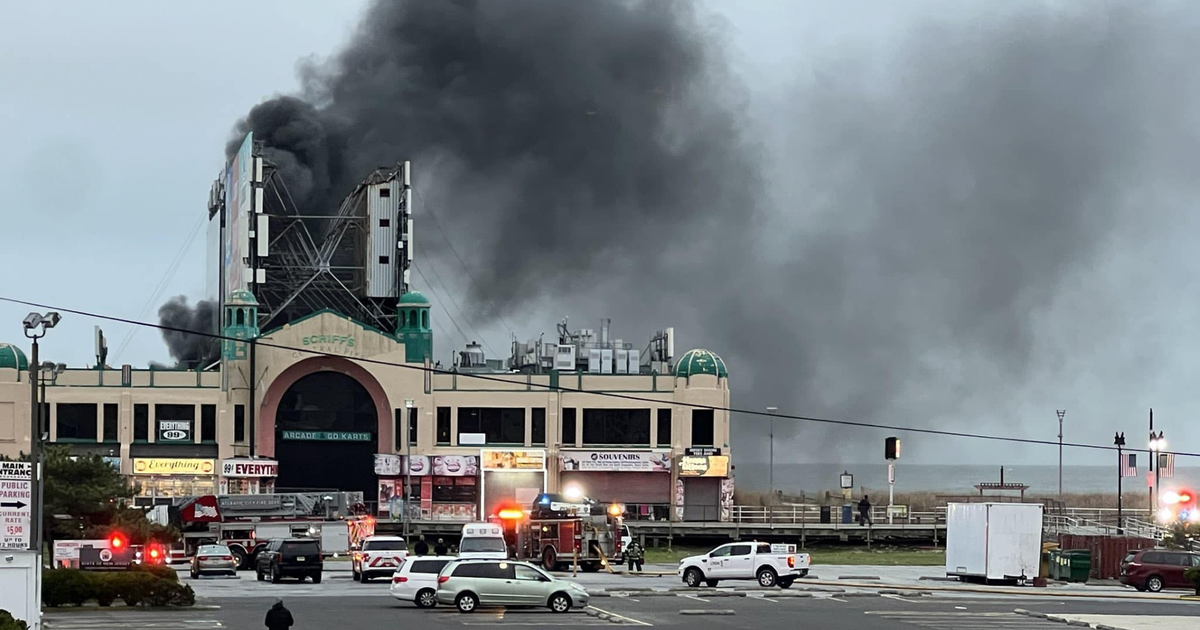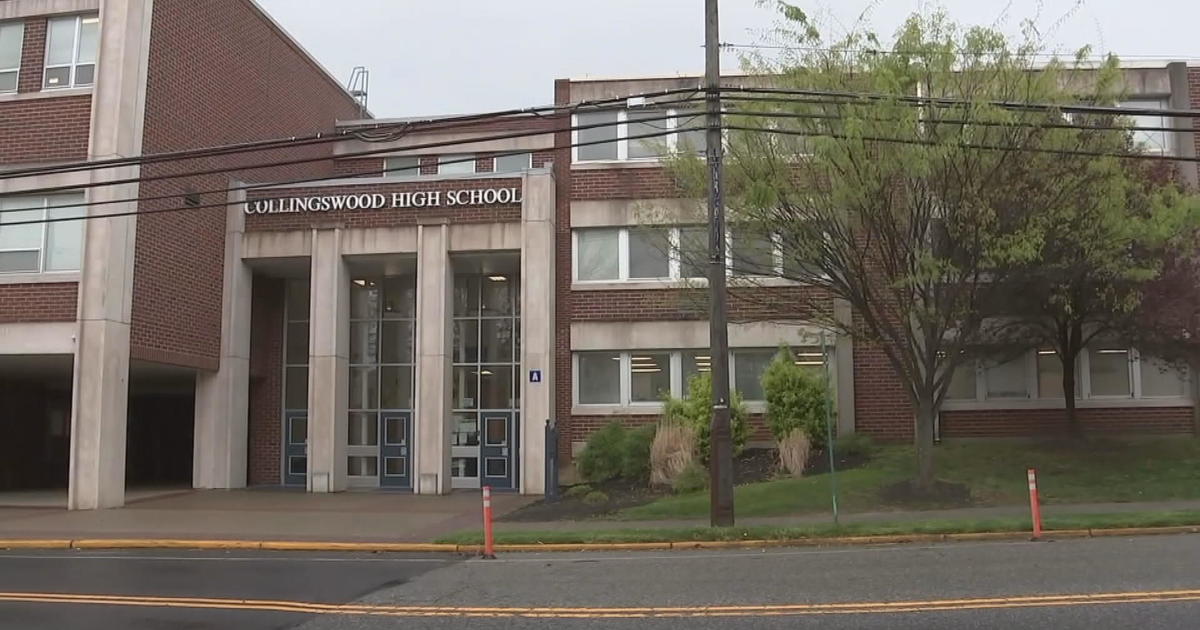I-Team Investigation: Toxic Failure
By Charlotte Huffman
PHILADELPHIA (CBS) -- A multi-million dollar federal cleanup operation is underway in south Jersey where U.S. Environmental Protection Agency workers try to stop the spread of what the EPA calls, 'an immediate risk to the public health.'
A CBS3 I-Team investigation is exposing how the site is a toxic failure of government oversight, how serious safety concerns could've been prevented and how millions of taxpayer dollars could've been saved.
The Dangers
In August 2013, the EPA discovered 2,000 barrels and drums at industrial drum recycler, Superior Barrel and Drum. The containers are mostly 250-gallon totes and 55-gallon drums full of different materials.
"I was extremely concerned about conditions at this site," said EPA Regional Administrator, Judith Enck after learning about the mess.
The EPA believes the owner Thomas Toy, cleaned and reconditioned plastic and metal containers for resale. Operations began sometime in the 1980's until 2012 when officials say Toy abandoned the property.
"It's amazing there wasn't a catastrophic fire or explosion at this place," Keith Glenn, EPA's on-site coordinator told the I-Team's Charlotte Huffman.
The EPA estimates some of the containers covering the 5.5 acre property have been there for decades. Many of them were found rotting, rusting and leaking cancer-causing chemicals into the ground and into the air.
Enck says materials discovered inside the barrels were flammable, corrosive and toxic. Lab tests proved the contaminants include trichloroethylene, PCBs, benzene, styrene, xylene and lead.
"Many of these compounds are known carcinogens or are known to cause cancer to humans so any contact with that material is going to pose an imminent and substantial danger to any person that comes up to it," said Glenn.
The site is so toxic when the I-Team got exclusive access to the site, officials asked the crew to reverse their vehicle into the area so a quick getaway could be made if air monitors sounded the alarm.
"Clearly we have a lot of concerns regarding the water and safety of the residents located nearby," said Glenn.
Superior Barrel and Drum sits partially on federal wetlands which raises health concerns for the people drinking well water nearby because there is the possibility that the leaking chemicals have seeped into the groundwater supply or are moving in that direction.
Residential wells have not yet been tested. That's largely because the samples collected on site have not indicated penetration into the ground water. However, the tests are only preliminary and further investigation is needed.
But there have been no official warnings to nearby residents who had no idea about the danger less than a quarter of a mile away from them.
"That's crazy and nobody ever said a thing," Trish Pratt said when the I-Team showed her photos of the cleanup operation.
The I-Team talked to some residents who had enough knowledge about the site that they'd already resorted to bottled water for cooking and drinking.
"We don't use the water because we heard there's a contamination somewhere," said Nykia Armstrong.
The EPA intends to collect additional samples on and off site to determine any groundwater impact.
"It needs to be stressed that these are very preliminary and we're not just walking away from what we've already seen," said Glenn.
The massive cleanup operation
Just last week, EPA announced the agency has begun to remove containers from the site. The entire cleanup is expected to wrap up in April.
On August 30, 2013 the New Jersey Department of Environmental Protection asked the EPA to evaluate the facility due to conditions at the site.
When EPA first arrived at the facility located at 798 Jacob Harris Lane, officials were denied access by the property owner, Thomas Toy and his attorney, Gary Lightman of Lightman and Manochi law firm. Both told EPA that none of the containers held hazardous materials.
Toy does not have a permit from the New Jersey Department of Environmental Protection for the storage, disposal or transportation of hazardous materials at the site.
The EPA gained access after going in front of a federal magistrate who issued a warrant.
"It seemed like something out of the 1970s," said Enck.
Glenn reiterated the extent of the mess saying the site's disrepair was unlike anything he'd seen before.
"I personally have never seen a site with this many containers in this state of deterioration," said Glenn.
Drums and other containers were stacked several high and even more were discovered inside numerous trailers on the property. Containers had holes, missing tops, were mislabeled or had no labels at all. Some of them were so corroded they hardly resembled a container that holds poisonous chemicals.
EPA's first priority was to stop the chemicals from leaking by removing busted containers and placing them in larger plastic containers. EPA also collected soil samples to determine what had spilled and might be penetrating through the soil.
Next step – removing the containers. A job easier said than done because the agency cannot properly remove and dispose of the containers and their contents unless investigators first know what is inside of all 2,000 of them.
Glenn says the cleanup at Superior Barrel and Drum is particularly challenging.
"Not one of them is filled with the same material. That's pretty unusual."
The EPA believes Toy was consolidating materials collected from various sources because investigators found as many as eight different layers inside the containers and multiple contaminants within each layer.
"Finding 2,000 containers all with various different chemical make ups in it is very unusual," Glenn said.
To make matters worse – even though some were labeled the EPA discovered what's inside of them was not indicative of what the label said.
"So we have to treat each container as an unknown substance. If we had the cooperation from the property owner maybe we would have been able to save some costs by going on his knowledge of what he was doing here," said Glenn.
The nearly $6 million dollar cost to taxpayers
In a press conference last week the EPA tallied the bill.
"Right now our costs are running over $600,000 and we expect for this to come close to a million dollars or more," said EPA regional administrator, Judith Enck.
But the final cost could be much higher.
EPA documents obtained by the I-Team show an estimated total project cost of 5.8 million dollars.
The EPA's policy is to go after the polluter for the cleanup cost.
"We don't want to have taxpayers footing the bill," said Enck.
The I-Team learned Toy currently owes $324,000 in property back taxes according to documents obtained from the Elk Township Tax Collector. Toy also filed for bankruptcy in 2012 but it was dismissed due to lack of information.
"If that's any indication of the kind of finances that (Toy) might have at his disposal then there isn't a snowball's chance in hell of him paying for this. This is going to be paid for by the taxpayer and anyone who thinks differently is living in a dream world," said Jeff Danner who runs a business down the street from Superior Barrel and Drum.
There are on-going civil and criminal investigations. The EPA says Toy has been named a responsible party and could face criminal charges. The I-Team's numerous calls, e-mails and a letter to Toy and his attorney have all gone unanswered.
Red flags raised early on
Danner said the problem was obvious several years ago.
"There was black sludge floating on standing water. You could see the ooze coming out of containers, drums. It was a hideous mess," he told Huffman.
The Bowers family also noticed the problem five years ago. Dan Bowers, Junior and his father, Dan Bowers, Senior hunt on their property located right next door to Superior Barrel and Drum.
"I could smell it and I knew it was a problem," said Bowers, Jr.
Dan Bowers, Sr. was so concerned he repeatedly sounded the alarm by calling, emailing and even sending photos of the mess to NJDEP but he says his concerns fell on deaf ears.
The lack of oversight infuriates Jeff Danner.
"I'm upset, I'm angry!" he told Huffman.
"The same agencies that come into my facility to inspect me have got to go down there! So how did (Toy) get away with it? That's a question I want someone to answer," Danner said.
To answer that question, the I-Team obtained records from NJDEP, Elk Township Police Department and the Gloucester County Health Department.
Timeline of complaints made to NJDEP
In addition to the photos sent by Bowers, the I-Team discovered further evidence showing that NJDEP was warned about contamination at the property numerous times beginning in 2009.
- In October 2009, Elk Township police responded to a complaint about Superior Barrel and Drum and reported "the odor of chemicals was unbearable" and "liquid chemical puddles were numerous." Police say they alerted NJDEP to their findings.
- A week later, a caller complained to NJDEP and the department recorded the complaint noting, "Unknown liquid coming out of drums and spilling onto ground" and "Drums in woods; area smells."
- NJDEP referred the case to the Gloucester County Health Department. According to police and NJDEP records the county inspector determined all the complaining was just over "spilled fruit juices which were cleaned up by Mr. Toy" and NJDEP closed the complaint.
"We all kind of looked at each other like, 'fruit juice?'" said Elk Township's Police Chief Charles DeFalco after learning about the health department's conclusion in 2009.
The I-Team asked the health department for the "fruit juice report" but was told that "the record no longer exists."
- In July 2010, NJDEP call records show another complaint was made.
- In September 2010, NJDEP received a complaint and noted "Ground contamination at location. Ongoing long time. "
According to NJDEP's complaint records, each time a complaint was made the conclusion was "investigation closed – no violations."
In November 2010, NJDEP began enhanced inspections, sending an inspector who is trained to detect hazardous substances to the site almost monthly. On each visit, the NJDEP inspector reported there was "not an environmental threat" and no hazardous liquids were on site.
- In May, 2013 NJDEP receives a call from Dan Bowers, Sr. and NJDEP noted "Caller reporting abandoned business has leaking barrels and drums and its running onto his property."
It was not until August 2013 that NJDEP officially recognized the problem, deeming it an "environmental threat."
"Some people might say NJDEP dropped the ball, would you agree," asked Huffman in an interview with NJDEP spokesman, Larry Hajna.
"I think we could have done a better job," said Hajna. "We relied on information provided to us by the owner."
"We did a lot of testing, we did observations but it doesn't mean the job couldn't have been done better."
Looking back, Chief DeFalco sees it more than just a job that could have been done better.
"Somebody dropped the ball," said DeFalco "There's a system in place. When you turn it over to a state or county agency that specializes in that stuff, you expect that the decision they're making is the right one… Somewhere along the line the buck is being passed."
The bigger picture
According to the Delaware Department of Natural Resources and Environmental Control, Toy is also under investigation for illegally storing drums containing hazardous materials at a second property in New Castle, Delaware. Toy owns Recyclers of Delaware, with properties in New Castle and Pedricktown, NJ.
NJDEP says there are approximately 14,000 contaminated sites in New Jersey. To find out if you live near a known contaminated site, click here. http://www.nj.gov/dep/srp/kcsnj/



